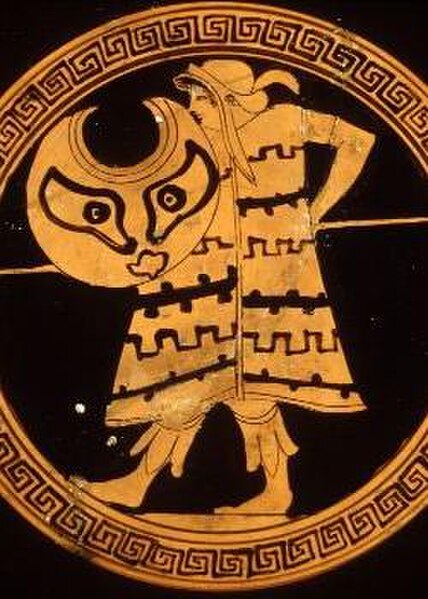The Odrysian kingdom was an ancient Thracian state that thrived between the early 5th century BC and the early 3rd / late 1st century BC. Located in present-day Bulgaria, southeastern Romania, northern Greece and European Turkey, it was a tribal amalgam dominated by the Odrysians that was the first large political entity to develop in the eastern Balkans.
Greek vase painting showing a Thracian woman with tattooed arms, c. 470 BC
A typical Odrysian elite tomb: the Zhaba Mogila tumulus near Strelcha, 5th–4th centuries BC
Gold funeral mask from the Svetitsa tumulus near Shipka, second half of the 5th century BC
A frieze from the Parthenon of Athens showing an Athenian hippeus wearing Thracian boots, a cloak and a fox-skin cap, c. 440 BC. The Athenian elite had a considerable respect for the Thracian horsemanship and emulated the Thracian dress and style of warfare.
The Thracians were an Indo-European speaking people who inhabited large parts of Southeast Europe in ancient history. Thracians resided mainly in Southeast Europe in modern-day Bulgaria, Romania and northern Greece, but also in north-western Anatolia in Turkey.
Bronze head of Seuthes III from his tomb
Thracian armor from the Odrysian kingdom 4th entury BC
Ares the god of war and courage. He is one of the Twelve Olympians, and the son of Zeus and Hera.
Illustration of 5th–4th century BC Thracian peltast








